For this issue of Present Space, the artist Sho Shibuya has painted one of the covers in a style reminiscent of the sunrise paintings that he’s become synonymous with. In the early days of the pandemic, Shibuya began painting the day’s sunrise on the front page of The New York Times, to find solace when the world was in an alarming state of flux. The artist shared these paintings on Instagram, which quickly garnered attention from users around the world—a reflection of when people sought (virtual) spaces that could provide a sense of calm and release.
Shibuya, who is a graphic designer and also runs the creative studio Placeholder, moved to New York from Tokyo in 2011. Much of his work, besides the sunrise paintings, examines his fascination with New York City, investigating the city’s sense of (visual) identity through objects such as the iconic Thank You plastic bag (until they were banned in 2020). When it came to the sunrise series, Shibuya took a similarly ubiquitous object—The New York Times, something he reads every day—because “New York City is my home.”
Since the easing of the pandemic, Shibuya has continued to paint The New York Times every day. This has led to collaborations with the likes of Saint Laurent, which commissioned Shibuya to paint two sunrise scenes that were exhibited alongside an additional 53 sunrise paintings for Art Basel Miami in 2021. More recently, Shibuya’s work was exhibited in the United Kingdom for the first time. Month, a series of 30 paintings and a sculptural piece made from thirty more paintings, was shown at Unit London in the summer of 2023. Made between January and May of that year, the paintings Shibuya exhibited follow the format of the sunrise series—though, crucially, Shibuya describes this series as being specifically post-Covid.
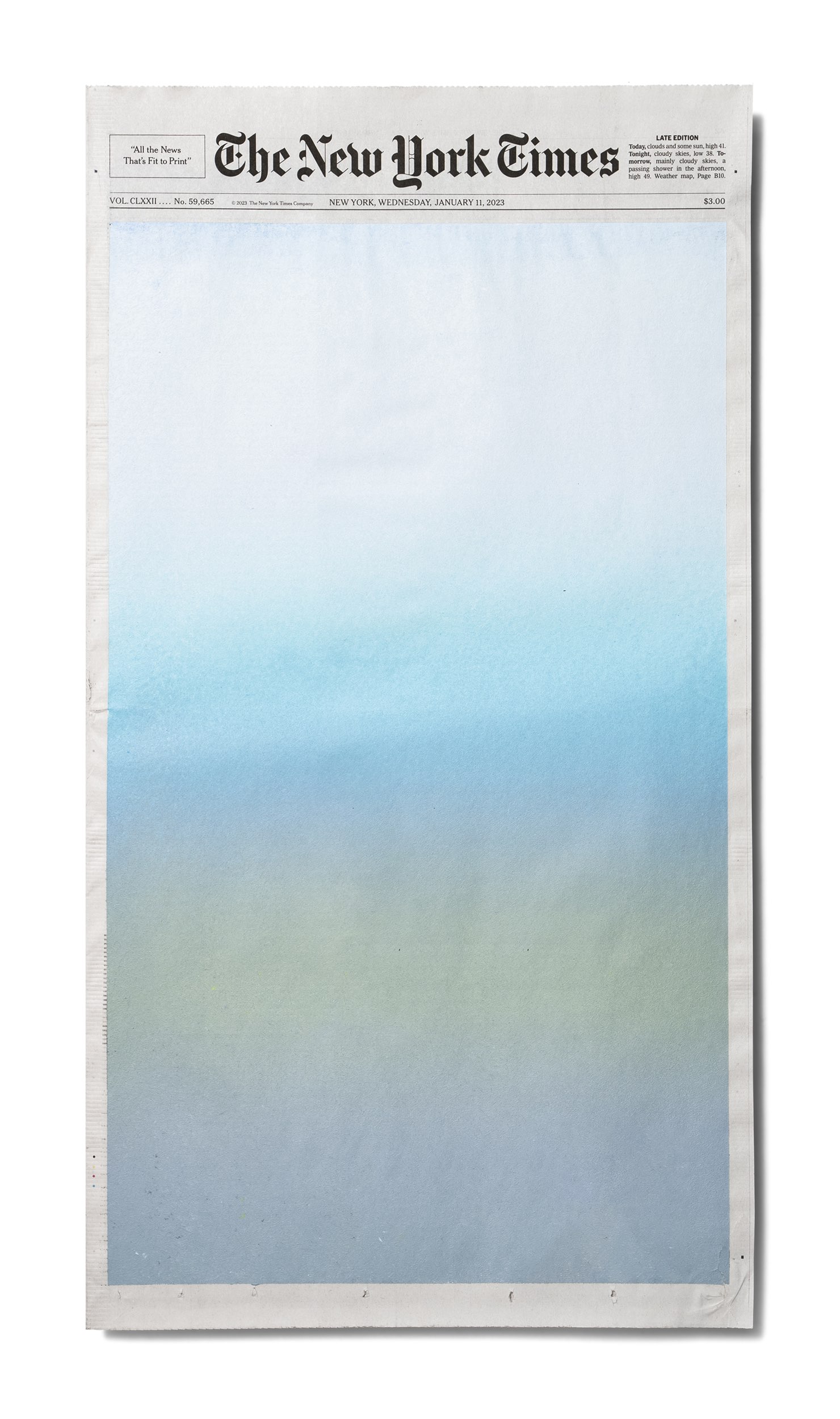
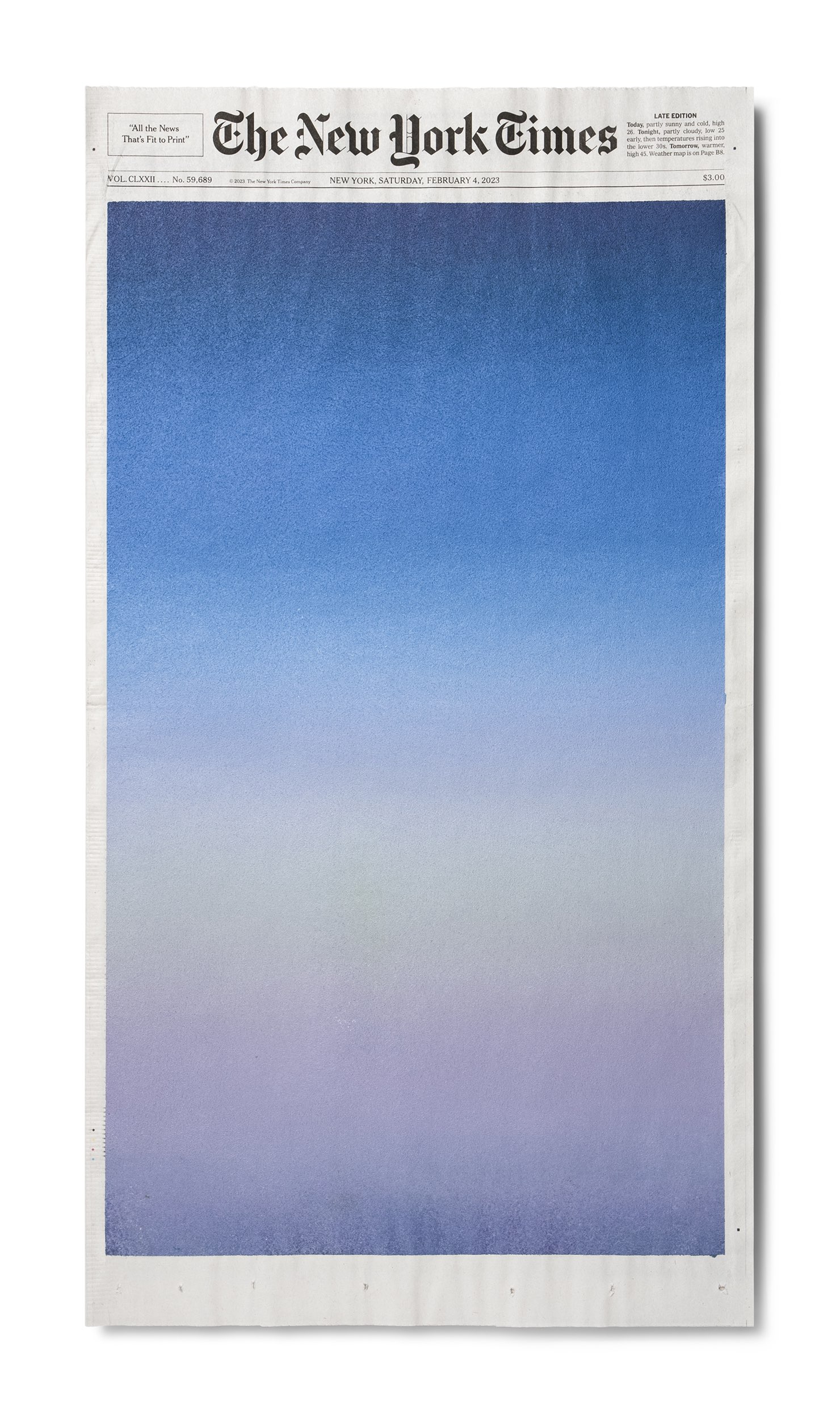
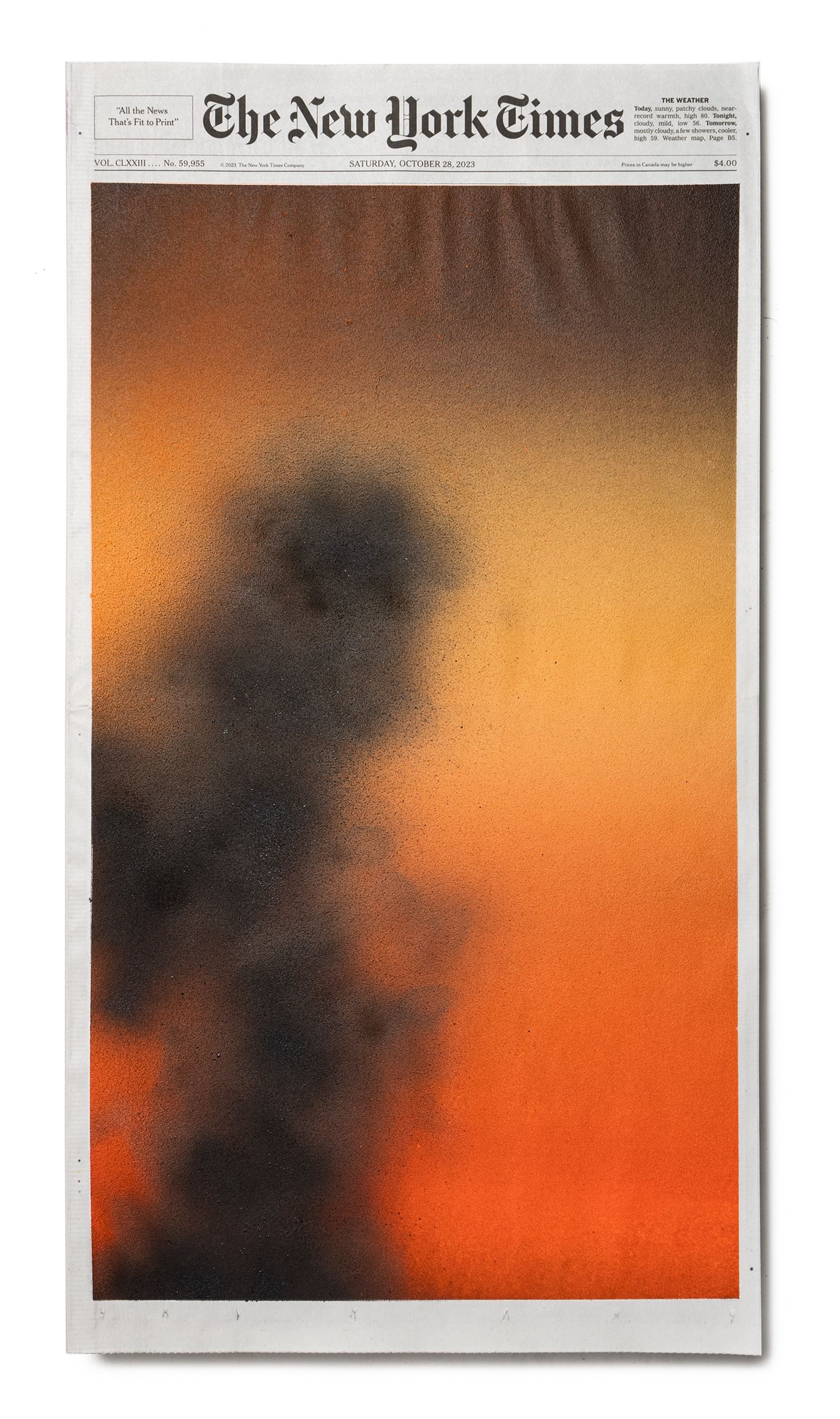
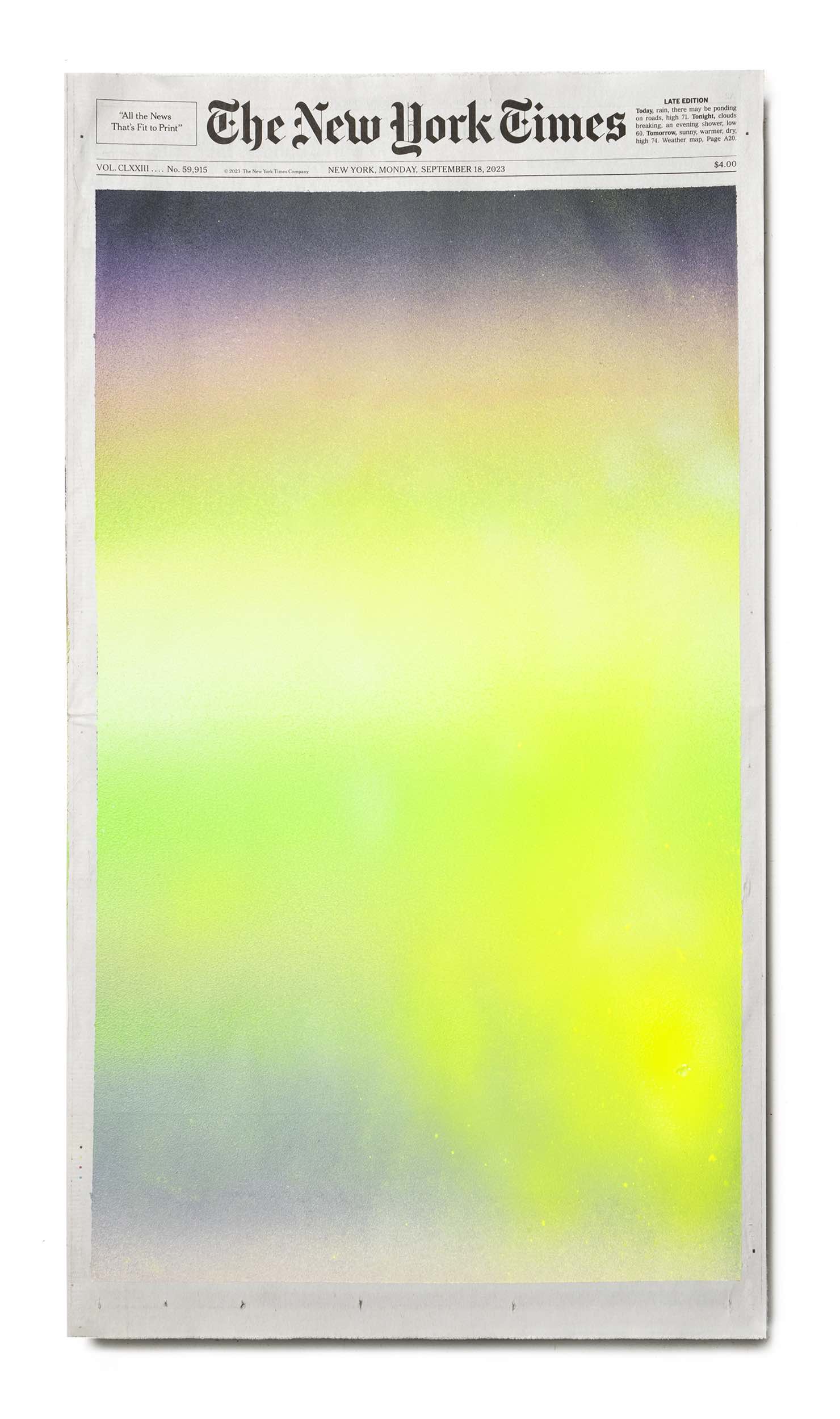
On the face of it, the sunrise paintings exhibited in London are not dissimilar from the earlier sunrise paintings that Shibuya created during the pandemic. In some ways, that’s the point of the series: Regardless of what’s reported in the newspapers each day, the sun will rise. With Month, Shibuya demonstrates this to be the case, with an unpainted copy of each newspaper presented beneath a glass-topped floor. Nonetheless, the circumstances of the sunrise paintings are different now. When Shibuya began the series, the weight of the pandemic loomed heavily over the world, in such a way that searching for a sense of normalcy, or routine, felt especially important.
Besides painting a sunrise, Shibuya sometimes offers an interpretation of a specific headline that he finds in the paper that day, a response to a significant global event or lighthearted news story. These can range from real-time effects of the climate crisis to a snowy day in New York. Such interpretations by Shibuya (which make up most of the paintings he’s shared to Instagram since the peak of pandemic) can be as playful as they are divisive. Followers flock to his feed to express thanks or frustration in response to interpretations of what can be emotional, distressing, or traumatic news stories.
That Shibuya’s paintings draw in such a wide audience (265,000 Instagram followers at the time of writing) offers insight into the way we interpret the news, individually or collectively. Of course, an event that’s in the headlines for a single day will have longer-lasting implications for those affected by it. Shibuya’s paintings, when considered in their entirety, are not an indication of which stories matter most, but instead a record of how the news, and art, can be utilised to find common understanding.
While in London for the exhibition, Shibuya painted a copy of The Guardian newspaper, the British counterpart to the newspaper he regularly uses as a canvas in New York. Purchasing a local paper is something that Shibuya does when visiting another country or city, as is painting the local sunrise. Indeed, wherever home is around the world, the sun continues to rise each day.
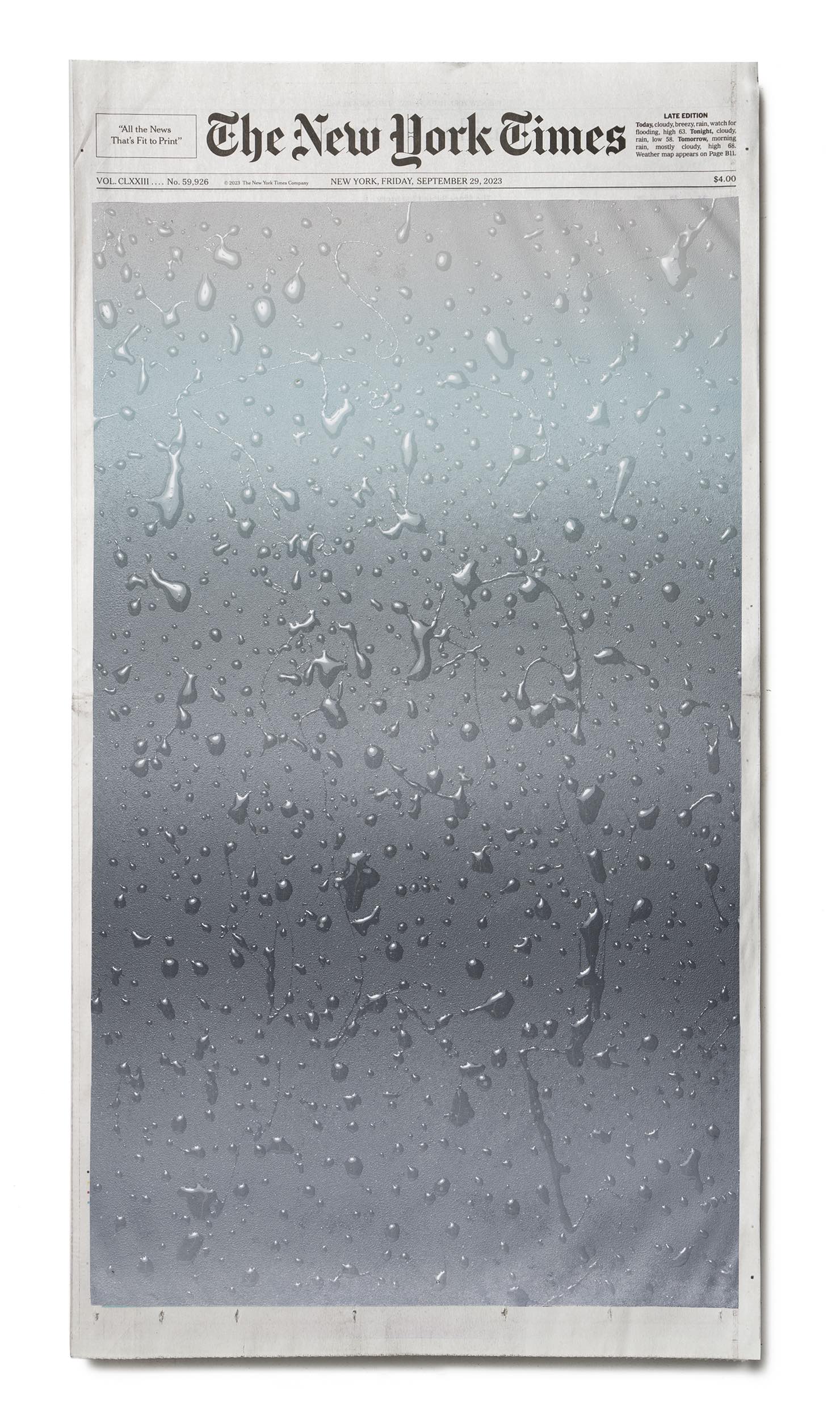
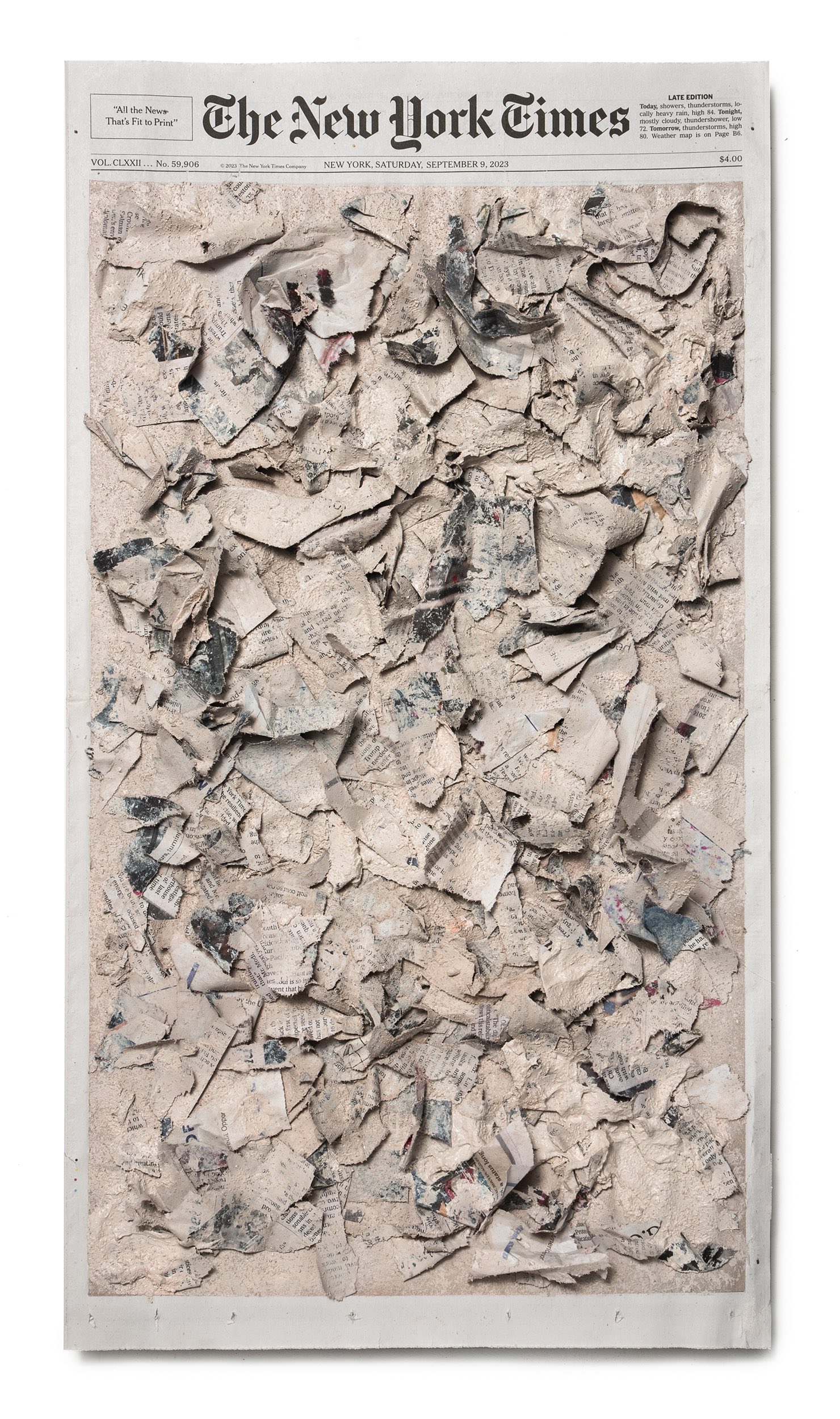
I wake up around 5am without an alarm. I get up, go for a run, grab a print copy of The New York Times, and make sure I take a picture of the sunrise from my window or the roof. I’ll have breakfast with my wife, and then I’ll get started painting for the day. I read the paper before I paint, to see if any stories catch my eye. Sometimes the editors of the newspaper will decide that a story is important enough to set the headline in all-caps italics. When they do that, I leave the headline exposed. Otherwise, I paint over everything but the heading and dateline.
I usually look back at the news from the same day a year before, to compare how we felt in the moment with how we feel about it a year later.
I have lived in New York City for 12 years and see it as a home. Even though people call it “the city that never sleeps,” there is a certain silence at the time of sunrise. It is a good time to connect with the city.
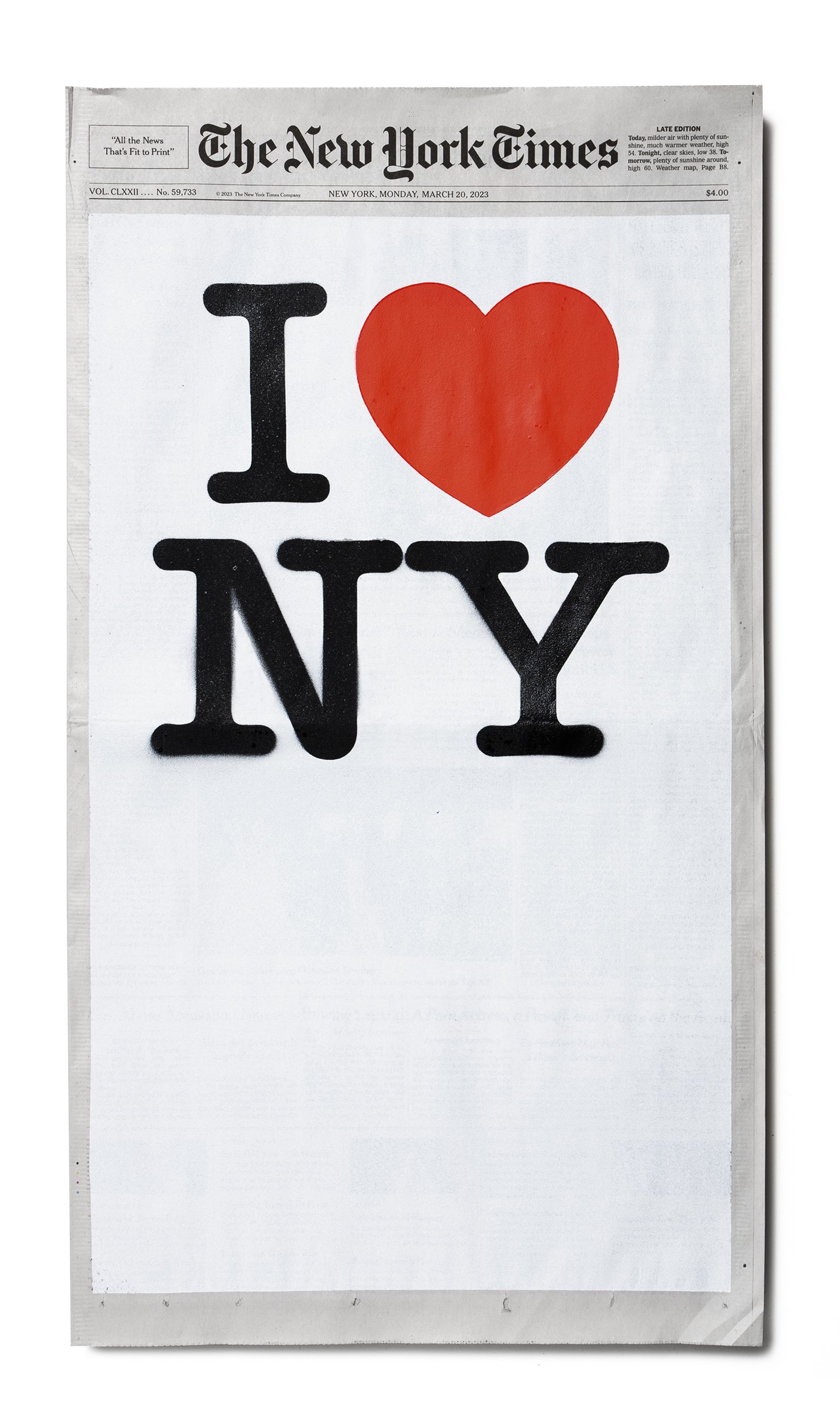
I have lived in New York City for 12 years and see it as a home. Even though people call it “the city that never sleeps,” there is a certain silence at the time of sunrise. It is a good time to connect with the city.
I share my feelings through the artwork. It’s 100% subjective. Sometimes people have the opposite view to me. I am not sure that anyone is looking to me for my opinion, but through any reaction that people have to my work, I feel connected with others. I feel grateful that I can communicate through that.
They are connected in the sense that they both capture a moment in time, either by human or natural causes, but they’re different executions. It’s more like they are coincidentally related; one does not depend on the other.
I am still discovering what it means to be alive, but I believe time is the only fair concept for all living creatures. Capturing time, either through sunrises or an event, is my means of being. The consistency helps me make sense of life.
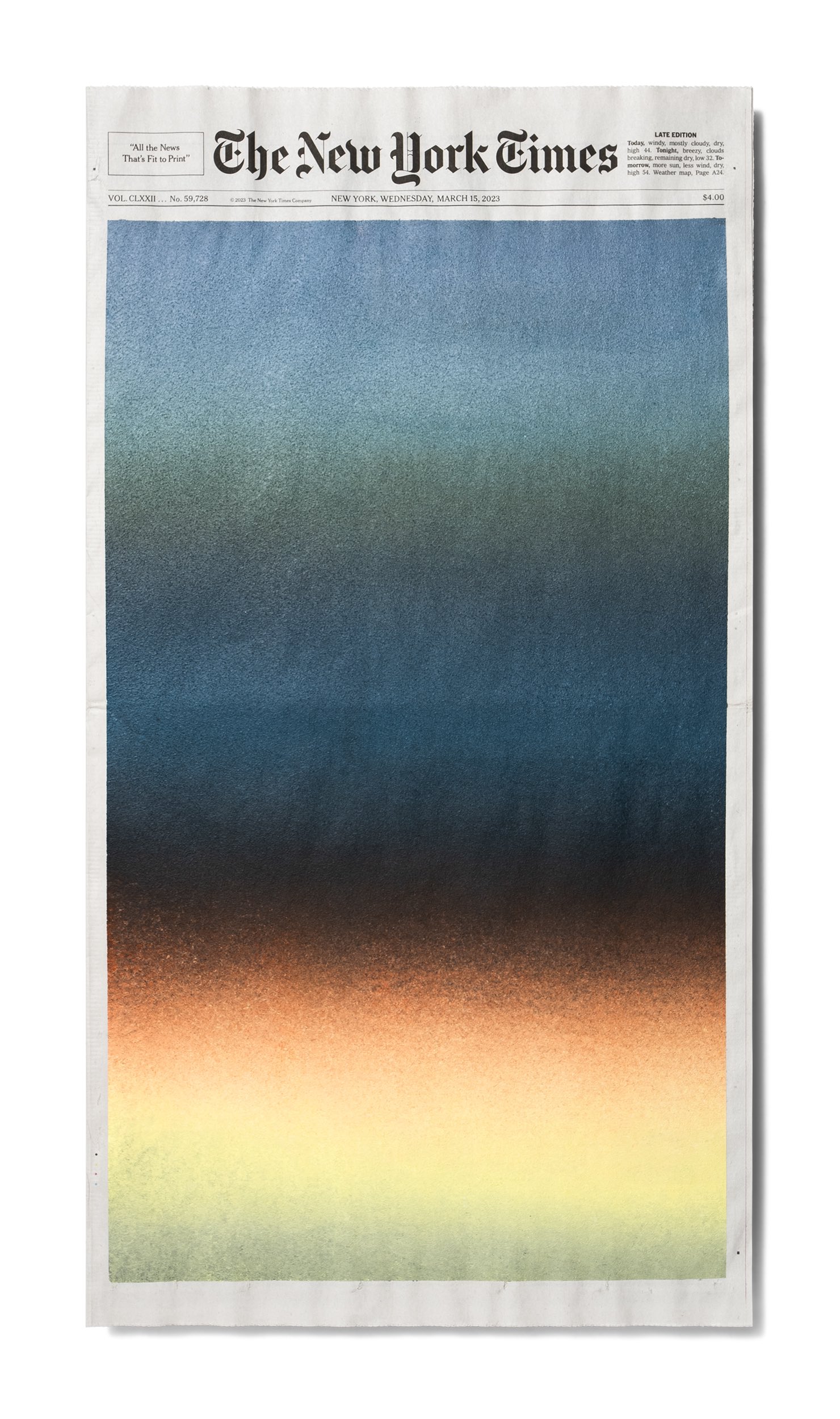
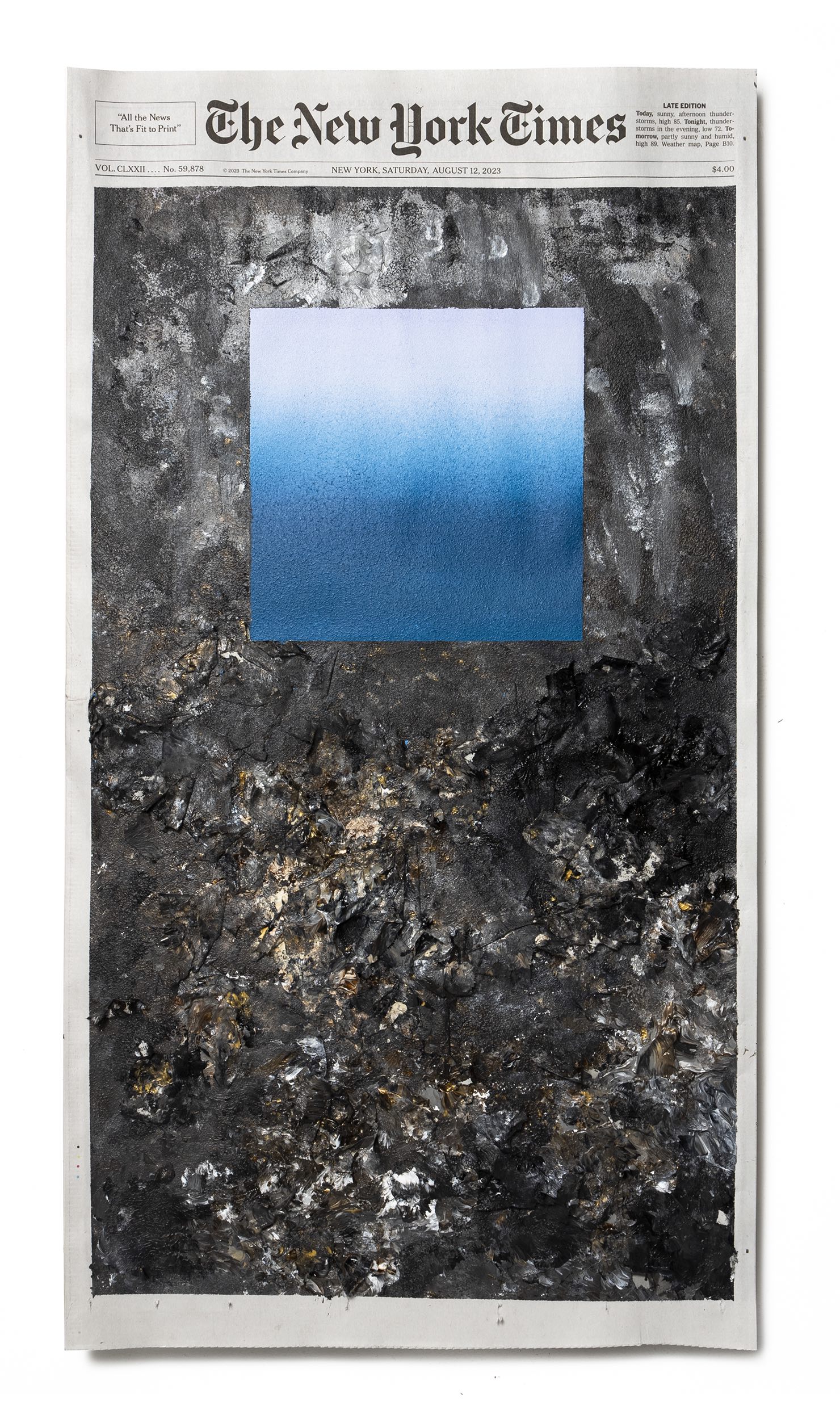
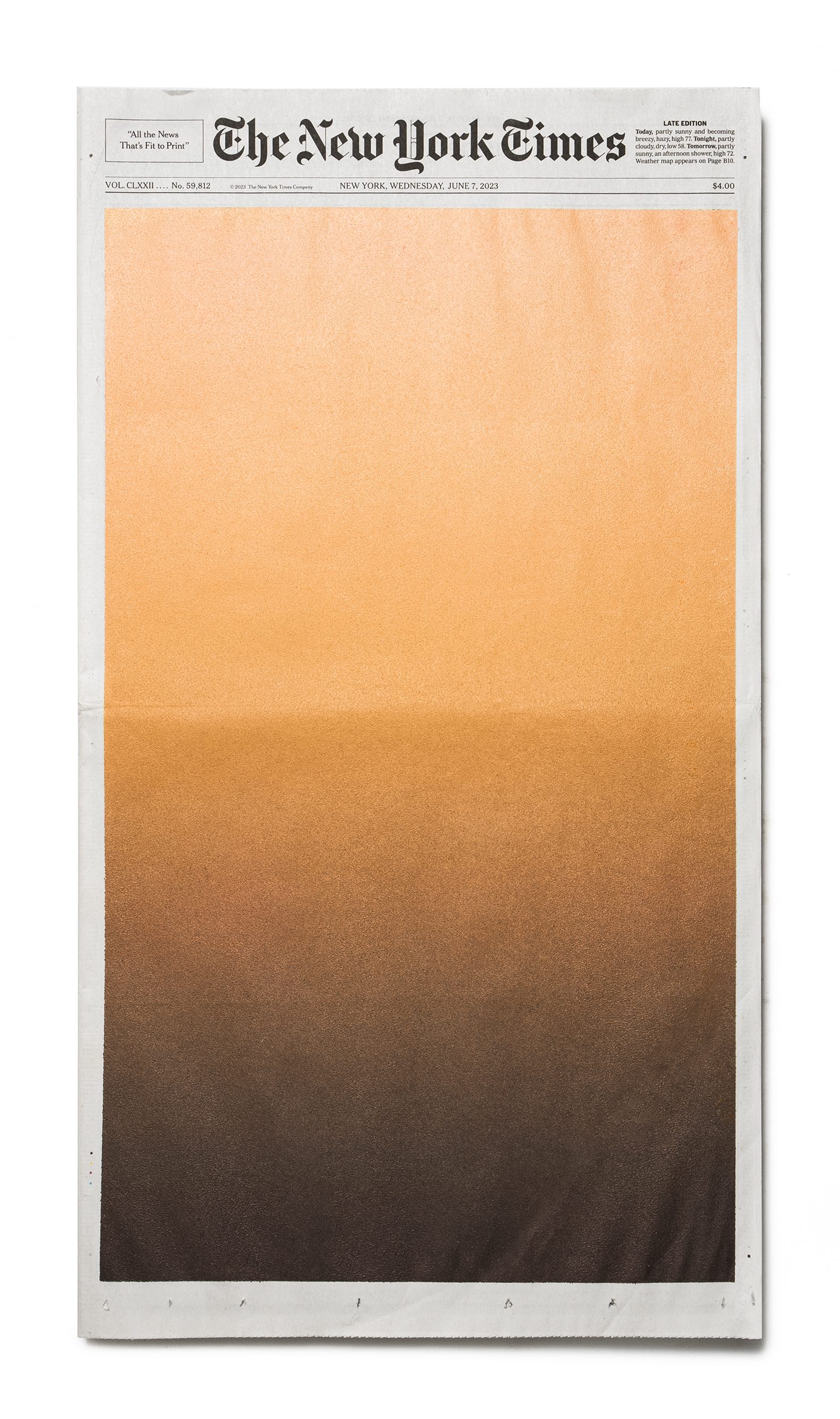
Yes, when I started the sunrise series, it was 100% a response to Covid and feeling like the world changed overnight. I was eager to find an optimistic way to view the world in the hectic new normal. Now I am continuing the series to compare our emotions and what we felt back then [with] now.
I love to see the artwork in real space, especially chronologically lined up day by day with non-painted newspapers. People react to texture, colour, or date; it varies. I love to hear each person’s memory overlap with my artwork’s date.
With my deep love for print and paper aside, I know I can’t stop the change. The last public pay phone in New York City was removed recently, but the newspaper is still here. There are fewer and fewer of these ordinary household items that used to be a universal presence in our lives. I am extremely lucky I can still use the newspaper as a canvas. The time stamp, and the news, makes the art extremely meaningful.
